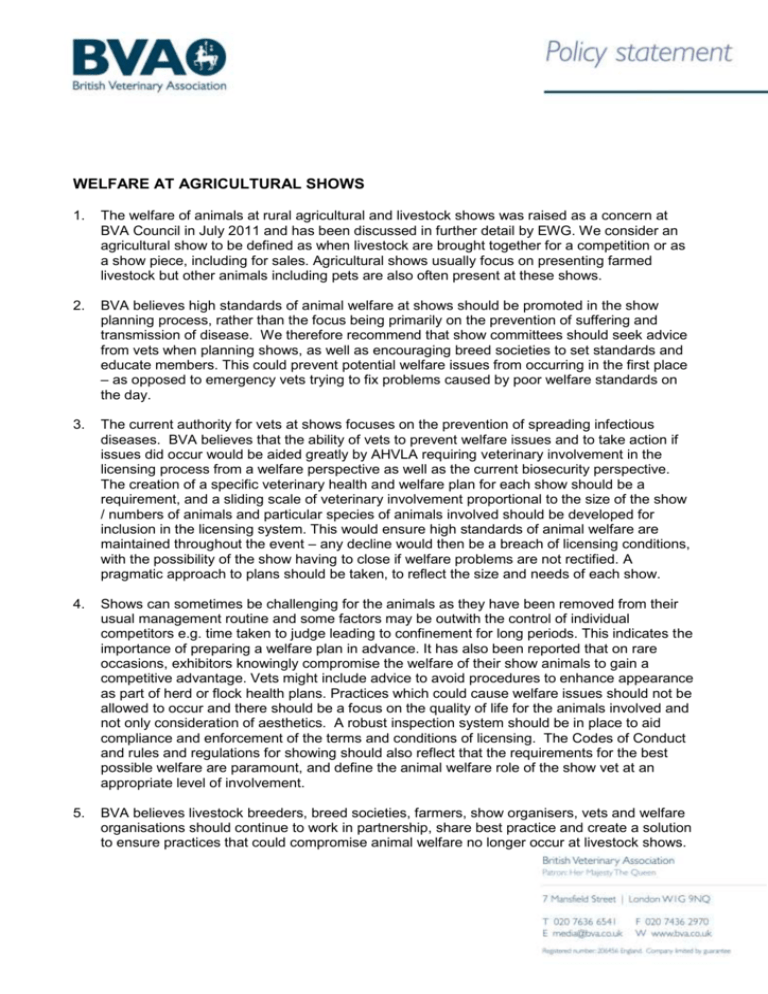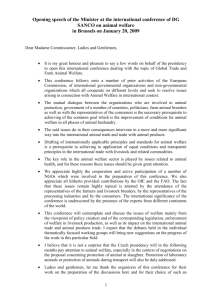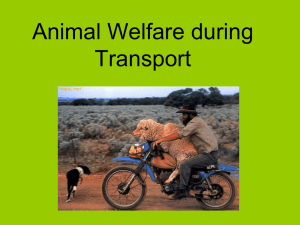policy statement
advertisement

WELFARE AT AGRICULTURAL SHOWS 1. The welfare of animals at rural agricultural and livestock shows was raised as a concern at BVA Council in July 2011 and has been discussed in further detail by EWG. We consider an agricultural show to be defined as when livestock are brought together for a competition or as a show piece, including for sales. Agricultural shows usually focus on presenting farmed livestock but other animals including pets are also often present at these shows. 2. BVA believes high standards of animal welfare at shows should be promoted in the show planning process, rather than the focus being primarily on the prevention of suffering and transmission of disease. We therefore recommend that show committees should seek advice from vets when planning shows, as well as encouraging breed societies to set standards and educate members. This could prevent potential welfare issues from occurring in the first place – as opposed to emergency vets trying to fix problems caused by poor welfare standards on the day. 3. The current authority for vets at shows focuses on the prevention of spreading infectious diseases. BVA believes that the ability of vets to prevent welfare issues and to take action if issues did occur would be aided greatly by AHVLA requiring veterinary involvement in the licensing process from a welfare perspective as well as the current biosecurity perspective. The creation of a specific veterinary health and welfare plan for each show should be a requirement, and a sliding scale of veterinary involvement proportional to the size of the show / numbers of animals and particular species of animals involved should be developed for inclusion in the licensing system. This would ensure high standards of animal welfare are maintained throughout the event – any decline would then be a breach of licensing conditions, with the possibility of the show having to close if welfare problems are not rectified. A pragmatic approach to plans should be taken, to reflect the size and needs of each show. 4. Shows can sometimes be challenging for the animals as they have been removed from their usual management routine and some factors may be outwith the control of individual competitors e.g. time taken to judge leading to confinement for long periods. This indicates the importance of preparing a welfare plan in advance. It has also been reported that on rare occasions, exhibitors knowingly compromise the welfare of their show animals to gain a competitive advantage. Vets might include advice to avoid procedures to enhance appearance as part of herd or flock health plans. Practices which could cause welfare issues should not be allowed to occur and there should be a focus on the quality of life for the animals involved and not only consideration of aesthetics. A robust inspection system should be in place to aid compliance and enforcement of the terms and conditions of licensing. The Codes of Conduct and rules and regulations for showing should also reflect that the requirements for the best possible welfare are paramount, and define the animal welfare role of the show vet at an appropriate level of involvement. 5. BVA believes livestock breeders, breed societies, farmers, show organisers, vets and welfare organisations should continue to work in partnership, share best practice and create a solution to ensure practices that could compromise animal welfare no longer occur at livestock shows.








